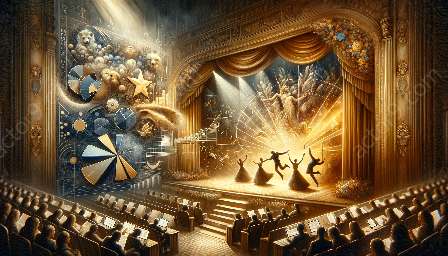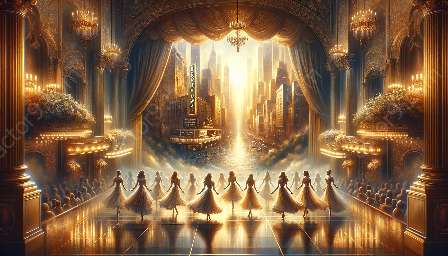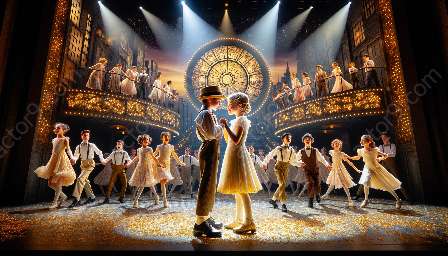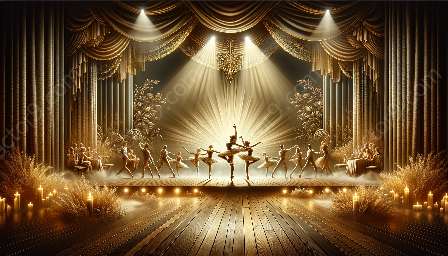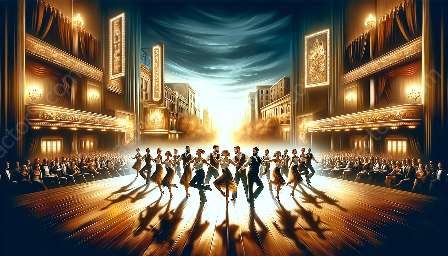Broadway choreography is a vital element of musical theater, shaping the physical expression of storytelling and capturing the audience's imagination. Behind the mesmerizing dance sequences and elaborate routines are skilled choreographers who bring these performances to life. To succeed in the competitive world of Broadway choreography, individuals need to cultivate a unique set of skills and undergo specialized training.
Importance of Training and Skills
Becoming a successful Broadway choreographer demands a combination of talent, discipline, and an in-depth understanding of dance, music, and storytelling. Choreographers are responsible for translating the emotions and themes of a show into captivating movement and choreographed sequences that resonate with the audience. To achieve this, they must possess a diverse set of competencies and undergo comprehensive training that prepares them to handle the unique demands of the Broadway stage.
Training in Dance Technique
The foundation of a Broadway choreographer's skill set lies in a deep understanding of various dance techniques. Mastery of multiple dance styles, such as ballet, jazz, tap, contemporary, and cultural dance forms, is essential. This comprehensive training allows choreographers to create dynamic and engaging choreography that complements the narrative and music of the production. Additionally, an understanding of dance history and terminology is crucial in effectively communicating with dancers and creating cohesive, visually stunning performances.
Embracing Musicality
One of the distinguishing features of successful Broadway choreographers is their innate musicality. Choreographers must seamlessly merge movement with music, interpreting and accentuating the nuances of the score through choreography. They need to possess a strong foundation in music theory, rhythm, and the ability to analyze and interpret musical compositions. This sensitivity to music enables choreographers to craft dances that synchronize with the tempo, melody, and emotional tone of the accompanying music, resulting in a harmonious and impactful theatrical experience.
Fostering Creativity and Innovation
Originality and creativity are fundamental to the success of a Broadway choreographer. They must constantly push artistic boundaries, infusing their work with innovation and fresh perspectives. Creative choreography enhances the storytelling, captures the audience's imagination, and contributes to the unique identity of a production. It necessitates the development of a distinct choreographic voice, allowing choreographers to bring their artistic visions to life while remaining relevant to the evolving landscape of musical theater.
Collaboration and Communication Skills
Broadway choreographers frequently collaborate with directors, composers, designers, and performers to weave together a cohesive and visually stunning production. Effective communication and collaboration skills are pivotal in executing a choreographer's artistic vision within the broader creative process. The ability to articulate and convey ideas, interpret feedback, and adapt choreography to suit the talents of individual performers is instrumental in creating memorable and impactful dance sequences that seamlessly integrate into the theatrical narrative.
Educational Path for Aspiring Broadway Choreographers
Aspiring Broadway choreographers can pursue formal education in dance, theater, or performing arts. Many opt to earn bachelor's or master's degrees in dance, with a focus on choreography and performance. Additionally, specialized programs and workshops dedicated to Broadway choreography provide invaluable hands-on experience and networking opportunities within the industry. Professional training often includes rigorous coursework in dance technique, choreographic composition, music theory, and theatrical production, empowering aspiring choreographers to develop a comprehensive skill set tailored to the demands of Broadway.
Cultivating Industry Experience
Internships, apprenticeships, and practical experience in theatrical productions are instrumental in honing a choreographer's craft. These opportunities allow emerging choreographers to work alongside industry professionals, gain firsthand insight into the creative process, and understand the intricacies of choreographing for live theater. Building a portfolio of diverse choreographic works and establishing connections with directors, performers, and production teams can catalyze an aspiring choreographer's transition into the competitive world of Broadway.
Embracing Versatility and Adaptability
Successful Broadway choreographers exhibit versatility in their approach to choreography, adapting seamlessly to a wide range of musical genres, storytelling styles, and production scales. This ability to pivot between traditional and contemporary dance forms, as well as diverse thematic elements, ensures that choreographers remain relevant and in demand within the constantly evolving landscape of Broadway and musical theater.
Conclusion
Training and skills are the cornerstones of a successful career in Broadway choreography. Aspiring choreographers must cultivate a diverse range of competencies, from technical proficiency in dance and musicality to creativity, collaboration, and adaptability. By pursuing specialized training, embracing creative innovation, and fostering industry experience, individuals can position themselves to contribute to the magic of Broadway and leave an indelible mark on the world of musical theater.










